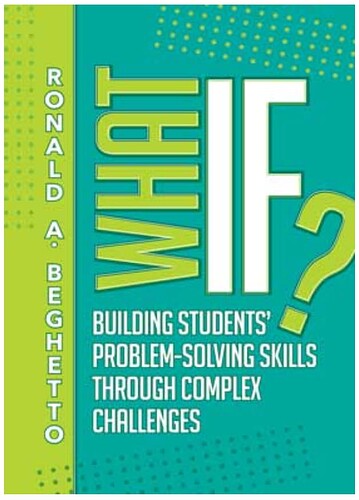In a recent Insights article, I wrote about how the “defining the problem” stage of the engineering design process provides a rich opportunity for helping your students develop their creativity as they brainstorm multiple approaches to solving open-ended problems. I recommended applying the first two of four action principles identified by Ronald Beghetto, in his book, “What If? Building Students’ Problem-Solving Skills Through Complex Challenges.”
Those principles are Stop, Think, Do and Learn. The first two principles, Stop and Think, align beautifully with the Define the Problem stage of the engineering design process. When applied, these two action principles can help learners engage in new ways of thinking about a problem, helping them to build their creative problem solving skills.
In that article, I illustrated this idea using IQ and EXP STEM Labs, but the same principles can be applied when you are guiding your students through open-ended challenges in 123 and GO STEM Labs. When students apply the Stop principle, they should take time to fully explore the problem they are trying to solve, which helps them to see a wide range of possible solutions. The following questions can be used to help young students to truly understand an open-ended challenge:
STOP
-
What do I know about the problem I am about to solve?
-
What is the goal of my project?
-
What questions do I have about this project?
-
Is there more than one way to solve this problem? (or to make this project?)
-
Where do I find the answers to questions I have about the problem?
-
What is the first step I can take to solve this problem? What is the next step?
The next problem solving principle suggested by Beghetto is Think. Here, students use divergent thinking to brainstorm ways to solve the problem, and convergent thinking to decide on the most effective way to solve the problem. Students can be presented with the following divergent thinking facilitation questions during the brainstorming phase to boost their creativity:
-
How many ways can you think of to solve this problem?
-
Can you combine your idea with another student’s idea?
-
Can you think of a completely new way to solve the problem?
-
Tell me some things you like about someone else’s idea. Can you add an idea of your own to it?
Once students have finished their brainstorming, the following convergent thinking facilitation questions can be used to help students decide on the best solution to try during the next stage of the engineering design process.
-
Which idea do you think will work the best to solve the problem? Why?
-
Can you make the idea even better?
-
Share your idea with a friend and ask them to give you one idea to make it better. Then have them share one of their ideas with you. Give them one idea to make it better.
Next time you are working on a 123 or GO STEM Lab with an open-ended challenge, try applying these ideas when your students are working to define the problem. You can begin by doing a whole class brainstorm, and modeling your own ways of answering the questions before having them brainstorm in their small groups, to provide scaffolding.
If you’d like to read the original Insights article, click here!
And be sure to post and let us know how your students define the problem creatively!

